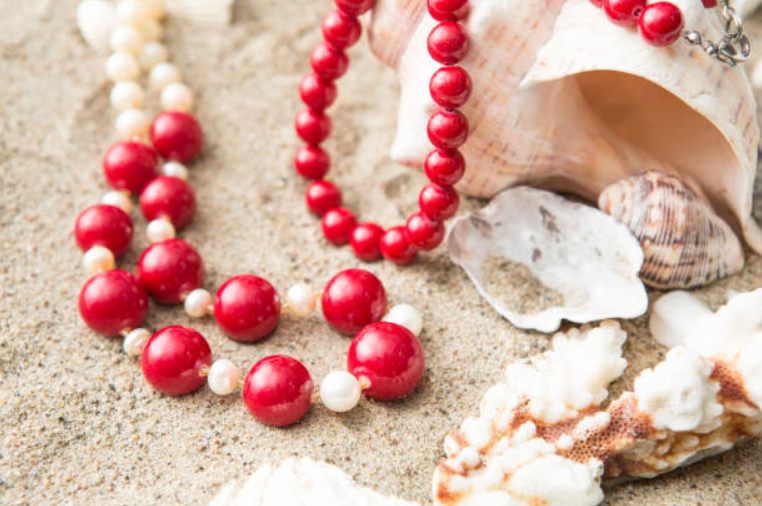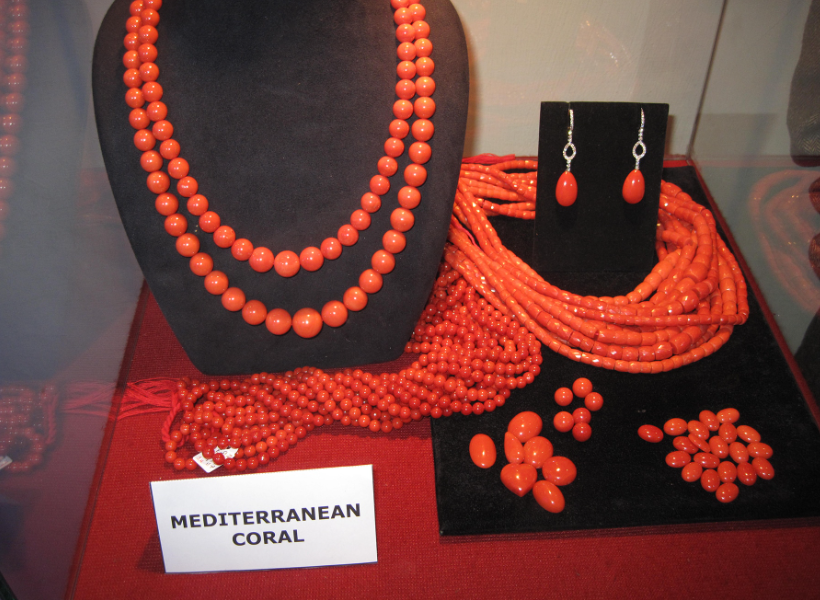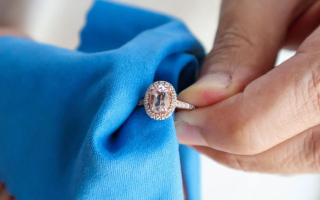Draped gracefully around a slender neck, embellishing a wrist, or adding a touch of the ocean’s mystique to an earlobe, coral jewelry has always symbolized ethereal beauty and elegance.
Its vibrant hues, ranging from soft pinks to deep reds, capture the essence of marine allure, invoking images of underwater gardens teeming with life.
But behind the mesmerizing facade of these aquatic gems lies an intriguing question that many potential buyers and enthusiasts often ponder: Why is coral jewelry so expensive?
Is it merely the beauty that sets the price, or are there deeper, multifaceted reasons behind its luxury price tag?
This article explores the intricate tapestry of history, biology, craftsmanship, and conservation that weaves together the true value of coral jewelry.
Historical Context of Coral Jewelry
Coral has been significant in human culture for thousands of years with its vibrant hues and unique texture. Across continents and civilizations, this intriguing marine product has been cherished for its aesthetic beauty and supposed mystical and protective qualities.
- Mediterranean and European Cultures: Coral was believed to have protective qualities in ancient Rome and Greece. It was often used as a talisman to ward off the evil eye and to protect children.
Babies were often gifted coral amulets, believed to help with teething and avoid negative influences. Furthermore, Greek mythology tells tales of how red coral originated from Medusa’s blood, which was spilled upon seaweed when Perseus laid her head on the shore.
- Asian Civilizations: In China, coral was—and remains—a symbol of longevity and prosperity. It has often been used in traditional Chinese medicines and is believed to bring good luck. The ancient Japanese valued coral, especially the precious red variety, for its association with religious and ceremonial rites.
- Native American Tribes: For Native Americans, coral, often combined with turquoise, held spiritual significance. It was seen as a symbol of life force energy and was used in ceremonies and rituals.
Its Use as a Status Symbol Through the Ages
Beyond its cultural and mystical attributes, coral’s rarity and unique beauty made it a prized possession among the elite.
- Ancient Royalty: In ancient Egypt, coral was reserved for the nobility, with its possession symbolizing a person’s status and power. Pharaohs and high-ranking officials often had coral artifacts and jewelry as part of their treasures.
- Renaissance Europe: Coral became increasingly popular among European nobility during the Renaissance. Necklaces, earrings, and brooches made of coral were statement pieces, showcasing the wealth and refined taste of the wearer.
- Trade and Exploration: As maritime exploration expanded trade routes, coral jewelry became a significant trade item, especially between the Mediterranean regions and Asia. Its demand grew so much that it became a currency in some areas.
- Modern Times: Today, genuine coral jewelry remains a status symbol. Its high cost, driven by its rarity and intricate craftsmanship, makes it an emblem of luxury and opulence.
From the protective amulets of ancient civilizations to the statement jewelry of modern elites, coral has maintained its allure and significance over millennia.
Its rich history intertwined with human culture gives coral jewelry a depth that goes beyond mere ornamentation. Understanding this historical context offers a glimpse into why coral jewelry holds such a coveted position in the world of luxury.
The Intricate World of Marine Treasures
Dive beneath the waves, and you’ll uncover the intricate world of coral reefs, playing a dual role as marine beauties and guardians of the ocean’s health. These marvelous formations, often incorporated into jewelry, command a high price for their splendor and their essential role in the marine environment.
Corals are truly wonders of the deep, turning heads with their vibrant colors and playing a pivotal role in the underwater tapestry of life.
Biology of Coral
At first sight, corals might deceive one into thinking they are nothing more than ornate underwater plants or stationary rocks. Yet, these are bustling colonies of minuscule beings called “polyps.” Each polyp, although only a few millimeters across, is a lively creature with a sac-like form.
With constant calcium carbonate production, these polyps lay the foundation for their homes, forming extensive and elaborate coral reefs over time. These reefs are not just striking underwater sculptures; they are thriving ecosystems.
Diversity within Anthozoa
Anthozoa is a class teeming with diverse marine life. While the celebrated coral reefs primarily come from the order Scleractinia, this group also embraces the equally captivating sea anemones and sea fans.
With their sturdy calcium carbonate exteriors, Scleractinian corals are the stars in the realm of jewelry, prized for their durability and intricate designs.
Colors and Types
Corals paint the underwater canvas with various colors, from serene whites and blush pinks to fiery reds. The source of these stunning shades is often the symbiotic algae, zooxanthellae, which reside within the coral tissues. These algae nourish the coral through photosynthesis and impart them with brilliant hues. In contrast, corals found in the deeper abyss, where sunlight is scarce, derive their pigmentation sans the presence of these algae.
More than Meets the Eye
While corals might be sought after for their visual charm, their role in the marine ecosystem is paramount. Coral reefs have taken millennia to form and are the backbone of marine biodiversity. They offer shelter, breeding grounds, and nourishment to countless marine species. Their well-being is intertwined with the health and vitality of our vast oceans
How coral becomes suitable for jewelry
Unlike traditional gemstones, coral isn’t mined from the earth but is delicately harvested from the depths of our world’s oceans. Yet, its journey from the seabed to a jewelry showroom is intricate, and understanding this process shines a light on its significant valuation.
1. Nature’s Craftsmanship: The Growth of Coral
Coral begins as a living organism. Belonging to the class Anthozoa, corals are marine invertebrates that build external skeletons made of calcium carbonate.
Over the years, often decades or even centuries, they form colonies that give rise to coral reefs. The dense, tree-like structures of certain coral species, especially the deep-red and pink varieties, are what jewelry artisans primarily seek.
2. Harvesting: A Delicate Endeavor
Since corals are living organisms, their harvesting requires an extremely delicate approach to ensure minimal harm to marine ecosystems.
Only specific coral species, and typically older specimens, are chosen for jewelry to ensure sustainability.
Divers are trained to identify and extract these corals without damaging the surrounding environment. The harvested corals are then carefully cleaned to remove any organic residue.
3. Preparing the Coral: From Raw Form to Gem Quality
Once harvested, corals undergo several processes to enhance their appearance and durability.
- Drying and Curing: Freshly harvested coral contains moisture and organic matter. Thus, they are left to dry for several weeks or even months to ensure all water content is evaporated. This drying process solidifies them, preparing them for the subsequent processes.
- Cutting and Shaping: Based on the jewelry design, corals are then cut into desired shapes. Given the brittle nature of dried coral, this is a meticulous task requiring a steady hand and specialized tools.
- Polishing: To bring out the coral’s natural shine and vibrant color, artisans polish them using varying grit levels. This process enhances the coral’s aesthetic appeal and smoothens its surface for comfortable wear.
4. Artistic Interpretation
Each coral piece is unique, with its patterns, hues, and textures. Jewelry designers often work closely with these natural variations, using them as inspirations.
Whether crafting an intricate necklace or a simple ring, the design revolves around maximizing the coral’s natural beauty.
5. Setting the Coral
Finally, the prepared coral is set into jewelry pieces. This can involve encasing them in precious metals like gold or silver or pairing them with other gemstones to create a harmonious blend of colors and textures.
The setting process further underscores the coral’s fragility, as excessive pressure or heat can damage the gem.
Transforming coral from a living marine organism to a piece of jewelry is both an art and a science. The time, effort, and expertise required at each stage offer a profound understanding of its high valuation in the market. This journey of coral, intertwined with nature’s brilliance and human craftsmanship, makes it a sought-after gem in the world of jewelry.
Factors Contributing to the High Cost of Coral Jewelry
Coral jewelry, with its vibrant hues and intricate patterns, holds a special allure for many. However, the price tag attached to these stunning pieces often comes as a surprise to the uninitiated. Let’s delve deeper into the reasons why coral jewelry commands such high prices:
1. Environmental Concerns & Sustainability
- Marine Ecosystems: Coral reefs, often termed the “rainforests of the sea,” play a vital role in marine ecosystems. They provide shelter, breeding grounds, and nourishment for countless marine species.
- Slow Growth Rate: Precious corals, the primary source of jewelry, have a particularly slow growth rate. It can take decades, or even centuries, for some coral species to reach the size desirable for jewelry crafting.
- Over-harvesting and Climate Change: The combined effect of over-harvesting and the adverse impacts of climate change has significantly threatened coral populations. Bleaching events and ocean acidification further exacerbate their vulnerability.
2. Regulations and Restrictions
- CITES Involvement: The Convention on International Trade in Endangered Species of Wild Fauna and Flora (CITES) plays a pivotal role in the trade of corals. This international agreement aims to ensure that the global trade in wild plants and animals does not threaten their survival.
- Impact on Prices: Due to the ecological concerns surrounding corals, several regulations have been enforced, restricting their trade. These tightened regulations naturally drive up the prices of coral jewelry, given the increased complexity of sourcing them legally.
3. Labor and Craftsmanship
- Skilled Artistry: Crafting coral jewelry is a complex endeavor. It demands a high degree of skill, often passed down through generations.
- Traditional Methods: Shaping, polishing, and setting coral is time-intensive. The conventional methods ensure the coral’s natural beauty is preserved but also add to the overall cost.
4. Rarity and Unique Characteristics
Varieties of Coral: While there are multiple coral species, only a few, like red, pink, and black corals, are highly sought after for jewelry. Each type varies in its rarity, further influencing its market value.
Uniqueness: Coral pieces are different. Each coral piece’s distinctive features, patterns, and hues make them unique, adding to their desirability and cost.
5. Demand vs. Supply
Global Demand: The allure of genuine coral jewelry isn’t limited to any one region. The demand continues to soar as more people worldwide vie for these exquisite pieces.
Limited Supply: Due to environmental concerns, regulatory restrictions, and the very nature of corals, there’s a limited supply available. This disparity between high demand and low supply naturally pushes prices upwards.
While coral jewelry’s beauty is undeniable, the intricate web of ecological, regulatory, and market factors behind its high price is equally fascinating. Those who invest in these pieces are not just purchasing jewelry; they obtain a slice of nature, history, and artistry.

Synthetic and Imitation Corals: Cheaper Alternatives
Coral jewelry, revered for its vibrant hues and organic allure, often comes with a hefty price tag due to its rarity and the ecological factors surrounding its harvest.
As demand for this natural wonder has grown, the market has seen an influx of synthetic and imitation corals, offering consumers a more affordable option.
But what exactly are these alternatives, and how do they measure up against genuine coral?
Brief Introduction to Lab-Created and Imitation Corals:
Lab-Created Corals: Like many gemstones, lab-created corals are available in the market. These corals are grown in controlled environments, mimicking the conditions under which natural corals form. They possess the same mineral composition as natural corals, making them very similar in appearance and texture.
Imitation Corals: These are materials designed to look like coral but made from entirely different substances. Common materials include dyed bone, shells, resin, or even glass. These imitations can vary widely in quality, with some being easily distinguishable from genuine coral, while others are meticulously crafted to deceive even the discerning eye.
The Price Difference Between Genuine and Imitation Corals
Genuine corals are harvested from the sea, a labor-intensive process fraught with ecological concerns and limited by regulations to protect marine ecosystems.
This scarcity and the ethical considerations around coral harvest significantly drive up its cost.
On the other hand, lab-created and imitation corals are more abundant and lack the natural limitations and ecological concerns tied to genuine corals, making them substantially cheaper.
How to Distinguish Between Genuine and Imitation Coral Jewelry
Distinguishing between genuine coral and its alternatives can sometimes be a challenge, but a few tips can guide the discerning buyer:
Texture and Temperature: Genuine coral typically has a rough texture when unpolished, whereas many imitations have a smooth feel. Natural coral also feels cold to the touch, much like genuine gemstones, whereas imitations may feel warmer.
Hot Needle Test: A hot needle discreetly can be pressed against the piece. Genuine coral won’t be affected, while imitations, especially those made of plastic or resin, will emit an acrid smell and might show a melt spot.
Magnification: Under magnification, genuine coral shows a natural, grainy structure with tiny pores, while many imitations reveal a more consistent, unnatural pattern.
Price: If the price seems too good to be true, it likely is. Genuine coral, especially in larger pieces or intricate designs, commands a high price, reflecting its rarity.
Professional Assessment: Always consult a professional gemologist or jeweler when in doubt. Their expertise can offer assurance of the authenticity of a piece.
Understanding the nuances between genuine, lab-created, and imitation corals can ensure you make an informed choice, balancing both your aesthetic desires and budgetary constraints. Whether you opt for the natural allure of genuine coral or the affordability of its alternatives, recognizing the distinctions will ensure you truly appreciate the piece you possess.
The Ethical Dimension: Balancing Beauty and Conservation
Our choices carry weight as consumers, especially for luxury items like coral jewelry. The allure of these stunning pieces can sometimes overshadow the ethical implications of their purchase. Below, we delve deeper into the moral aspects and ongoing efforts to balance beauty and conservation.
The moral implications of buying coral jewelry
- Habitat Destruction: Coral reefs are often called the “rainforests of the sea” due to their rich biodiversity. When coral is harvested for jewelry, it disrupts these fragile ecosystems, leading to a loss of habitat for countless marine species. This ripple effect endangers not just individual species but the health of our oceans at large.
- Slow Growth: One of the most critical factors that make coral conservation necessary is their slow growth rate. Some species of corals grow just a few millimeters each year. When harvested, these reefs may take decades or even centuries to recover, further stressing an already fragile ecosystem.
- Cultural Significance: Coral reefs are ecologically essential and hold immense cultural value for indigenous communities worldwide. These communities often see reefs as part of their ancestral heritage, and over-harvesting can erode these vital cultural connections.
- Climate Change Impact: Coral reefs serve as vital carbon sinks, helping to balance the ocean’s carbon dioxide levels. Their destruction contributes to the current climate crisis and weakens one of our natural defenses against it.
Efforts by jewelers and conservationists to promote sustainable coral jewelry
- Certifications: Ethical jewelers are increasingly turning to certification bodies that validate the sustainability of the coral used in their pieces. These certifications often ensure that the coral is either sustainably farmed or sourced from areas where harvesting does not lead to ecological degradation.
- Artificial Reefs: Several innovative initiatives are exploring the development of artificial coral reefs. These man-made structures aim to serve as an alternative habitat for marine life, offsetting some of the damages caused by harvesting.
- Promotion of Alternatives: The jewelry industry, along with conservationists, is advocating for alternative materials that imitate the aesthetic appeal of coral. Synthetic or lab-grown options can offer the same beauty without the ethical drawbacks.
- Educational Campaigns: Knowledge is power, and multiple organizations are dedicating resources to educating the public about the ethical implications of coral jewelry. These campaigns aim to reduce demand for unsustainably harvested coral by fostering more informed consumer choices.
- Rehabilitation Programs: To further mitigate the impact of coral harvesting, some organizations collaborate with local communities to engage in reef rehabilitation efforts. These programs aim to restore damaged reefs, providing a lifeline to these invaluable ecosystems.
- Collaborations: The push for sustainability is encouraging collaborations between jewelers and marine conservation organizations. Together, they work on initiatives that minimize the environmental impact of coral jewelry production while maximizing educational outreach.
By understanding this ethical dimension, consumers are better equipped to make informed decisions, allowing for a delicate balance between admiring the beauty of coral jewelry and maintaining a commitment to conservation and ethical responsibility. You can help ensure that these natural wonders endure for generations through responsible choices.
Tips for Buying Affordable Coral Jewelry
Coral jewelry, with its vibrant hues and intricate designs, often commands a premium price due to its rarity and the complex processes involved in its extraction and crafting. However, for those who have a penchant for these marine treasures but are wary of the price tag, there are ways to find coral jewelry that’s both beautiful and budget-friendly. Here are some tips to consider:
1. Know the Types: Not all corals are priced equally. While red or “precious” coral tends to be more expensive, other types like bamboo coral or sponge coral can be more affordable. Do your research and understand the differences before making a purchase.
2. Opt for Vintage: Vintage or second-hand coral jewelry is often more affordable. This can save you money and promote sustainability by reducing demand for newly harvested coral.
3. Check for Treatments: Some coral jewelry is dyed to enhance its color or treated to improve its luster. While these pieces can still be beautiful, they are typically less valuable than untreated specimens. If price is a concern, consider treated coral, but always ensure the seller discloses any enhancements.
4. Support Local Artisans: Local artisans might offer more affordable pieces than high-end brands or commercial retailers in regions where coral jewelry is traditionally made. Buying from them also ensures your money goes directly into supporting the local economy.
5. Beware of Imitations: With the rising popularity of coral jewelry, there are many imitations in the market made from resins, plastics, or other materials. While these can be even more affordable, ensure you know what you’re purchasing and that the price reflects the material’s authenticity.
6. Choose Simpler Designs: Intricate designs and larger pieces usually have a higher price tag. Opting for simpler designs or smaller pieces can be a way to own genuine coral jewelry without breaking the bank.
7. Ask for Certifications: Many countries and organizations have regulations to ensure corals are sustainably harvested. While this might not always reduce the price, it provides that you’re buying an ethically sourced piece. Sometimes, older stock that isn’t certified may be sold at reduced prices, but it’s essential to consider the environmental impact.
8. Attend Gem and Jewelry Shows: These events often have a wide range of high-end and budget-friendly vendors. You might find good deals, especially towards the end of these shows when sellers want to reduce their inventory.
Conclusion
The allure of coral jewelry, with its intricate designs and radiant hues, is undeniable. However, the price tag attached to these treasures reflects not just their beauty but also the ecological, cultural, and ethical weight they bear.
The slow growth of coral and its vital ecological and cultural significance make each piece a testament to the wonders of our oceans and the complexities of human interaction with nature.
The journey towards more sustainable and ethical jewelry practices, such as seeking certifications, promoting alternatives, and supporting conservation collaborations, indicates a broader shift in our values. As consumers and admirers of beauty, our choices matter.
Recognizing the true cost of coral jewelry is the first step in appreciating its physical beauty and broader role in our world. By making informed decisions, we celebrate the splendors of the marine realm and contribute to its conservation for future generations.



